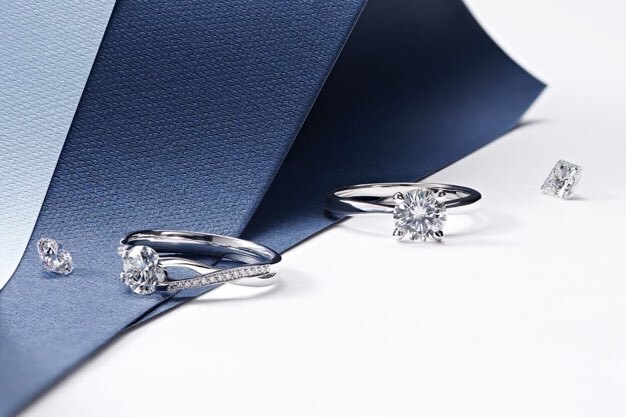
January 15, 2019
Carat
Carat weight is used to indicate the weight of a gemstone, and 1ct is made up of 100 individual points. As you increase the weight of a diamond, you also increase its rarity, meaning that the price also goes up.
Many people seek diamonds of a certain weight, such as 0.50ct or 1ct, and as a result, these weights command a higher price than stones that may appear the same size, but weigh just a little less like 0.48ct or 0.97ct.
It is also possible for two stones with a significant difference in weight to appear the same size, which results from a difference in the cutting of the stones.
This chart shows the carat weight and associated width (in millimetres) of a diamond:
|
Weight |
0.10ct |
0.25ct |
0.33ct |
0.50ct |
0.65ct |
0.75ct |
1.00ct |
1.50ct |
2.00ct |
|
Spread (mm) |
3.00 |
4.00 |
4.40 |
5.00 |
5.50 |
5.90 |
6.50 |
7.40 |
8.00 |
Cut
The term ‘cut’ is often used to refer to the shape of a stone, but is also used to describe the proportions and faceting.
These cut stone characteristics are the most important when considering the brilliance and fire of a finished diamond. Each different shape of diamond has an ideal cut, which ensures that light passing in to the stone is maximised, creating the beauty we associate with diamonds. If the diamond is cut too deep or too shallow, however, light fails to be reflected by the stone and the result is a darkening of the diamond.
Colour
The colour grade of a diamond is an indication as to the lack of colour within the stone. The more colourless the stone the more rare and valuable it is in comparison to other colour grades.
The gradient in colour grades is such that it is often difficult for those with an untrained eye to pick up the subtle variations, and it is generally accepted that colours D to G offer nice “white” stones, whilst colour grades of I or above tend to display a slight discolouring.
|
D |
E |
F |
G |
H |
I |
J |
K |
L |
M |
N |
O |
P |
Q |
R |
S |
T |
U |
V |
|
Colourless |
Near Colourless |
Slightly Tinted |
Very Light Yellow |
Light Yellow |
||||||||||||||
Clarity
Referring to the presence of inclusions or imperfections within a diamond, clarity is assessed under 10x magnification.
Diamonds that are graded IF have no inclusions visible even under 10x magnification, whilst grades VVS to SI are known as ‘eye clean’. ‘Eye clean’ refers to the fact that marks may be visible using a jeweller’s loupe, but are not visible to the naked eye. In contrast, stones with a grading of I are considered imperfect and have inclusions that can be seen without magnification.
|
IF |
VVS1 |
VVS2 |
VS1 |
VS2 |
SI1 |
SI2 |
I1 |
I2 |
I3 |
|
Internally Flawless |
Very, Very Small Inclusions |
Very Small Inclusions |
Small Inclusions |
Imperfect |
|||||
|
Loupe clean |
Eye clean |
Visible to the naked eye |
|||||||